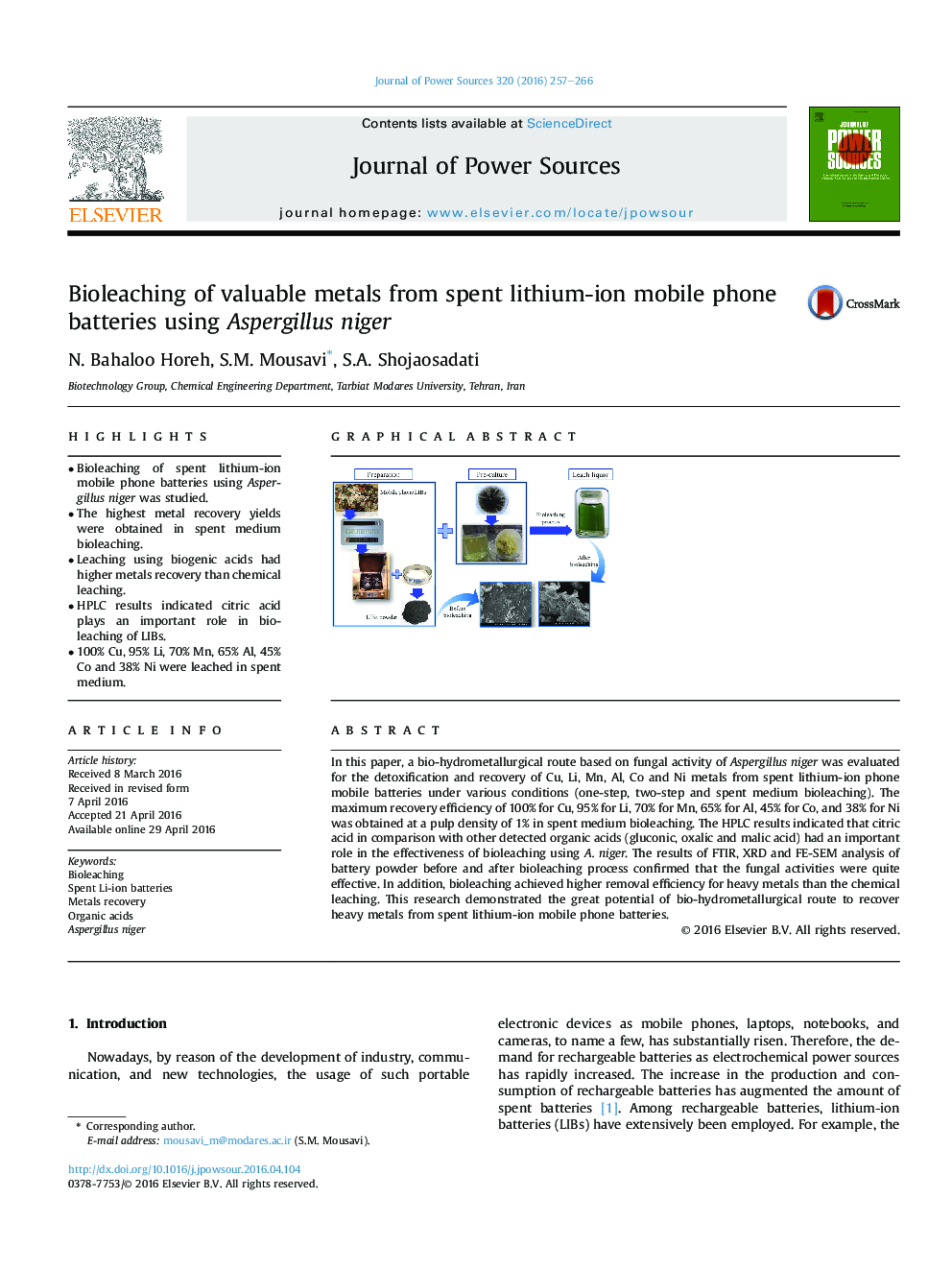| Article ID | Journal | Published Year | Pages | File Type |
|---|---|---|---|---|
| 1286038 | Journal of Power Sources | 2016 | 10 Pages |
•Bioleaching of spent lithium-ion mobile phone batteries using Aspergillus niger was studied.•The highest metal recovery yields were obtained in spent medium bioleaching.•Leaching using biogenic acids had higher metals recovery than chemical leaching.•HPLC results indicated citric acid plays an important role in bioleaching of LIBs.•100% Cu, 95% Li, 70% Mn, 65% Al, 45% Co and 38% Ni were leached in spent medium.
In this paper, a bio-hydrometallurgical route based on fungal activity of Aspergillus niger was evaluated for the detoxification and recovery of Cu, Li, Mn, Al, Co and Ni metals from spent lithium-ion phone mobile batteries under various conditions (one-step, two-step and spent medium bioleaching). The maximum recovery efficiency of 100% for Cu, 95% for Li, 70% for Mn, 65% for Al, 45% for Co, and 38% for Ni was obtained at a pulp density of 1% in spent medium bioleaching. The HPLC results indicated that citric acid in comparison with other detected organic acids (gluconic, oxalic and malic acid) had an important role in the effectiveness of bioleaching using A. niger. The results of FTIR, XRD and FE-SEM analysis of battery powder before and after bioleaching process confirmed that the fungal activities were quite effective. In addition, bioleaching achieved higher removal efficiency for heavy metals than the chemical leaching. This research demonstrated the great potential of bio-hydrometallurgical route to recover heavy metals from spent lithium-ion mobile phone batteries.
Graphical abstractFigure optionsDownload full-size imageDownload as PowerPoint slide
